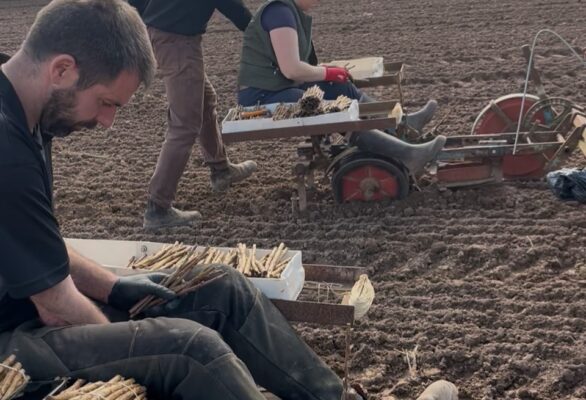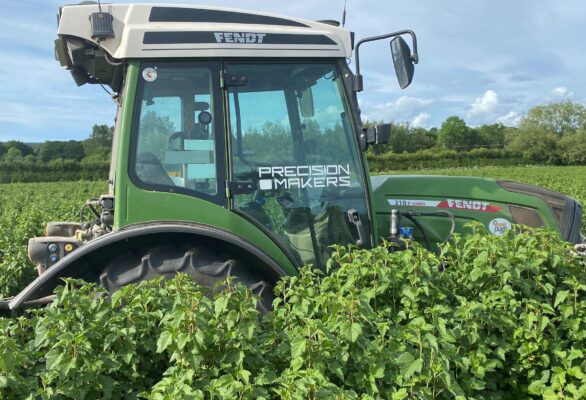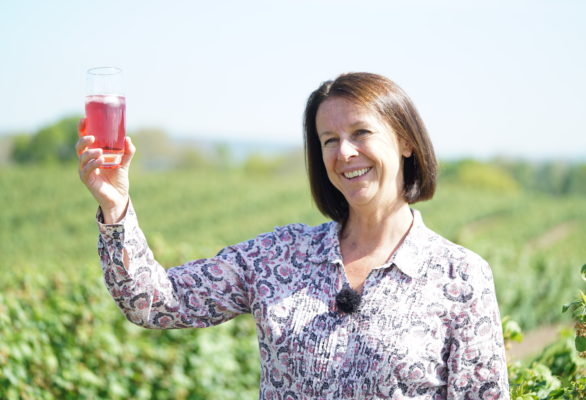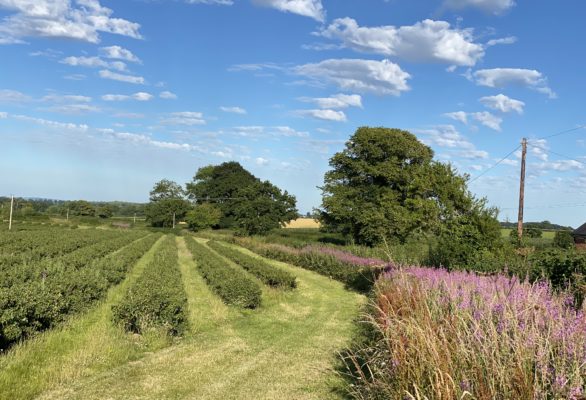Blackcurrants have been grown at White Heron since the 1880s even if originally on a kitchen garden scale. Post war we were part of the cohort that started growing blackcurrants for Ribena – the start of a long and fruitful relationship! Blackcurrants are a hardy and deciduous shrub with a delicious fruit and well looked after they can last for up to 20 years. In plantations of up to 20 acres (we have a total of 150) of varying ages and different varieties. As the years have gone by the process has become more and more automated and the tractors and machinery considerably more advance, using GPS and field soil mapping to optimise results. More detailed information can be found next to the photographs below. For other parts of the farm go to whole farm, environment, blackcurrants, apples, vineyards, other enterprises and White Heron Drinks.





